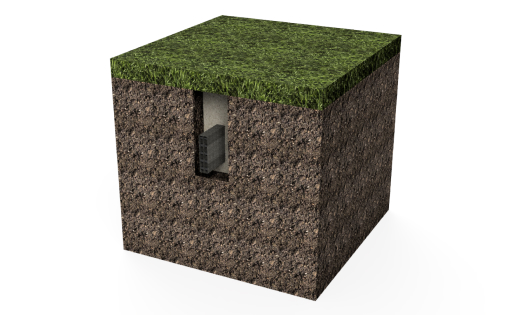
What Is Vertical Drainage?
A vertical drainage system creates a channel to transport soil water, speeding up the settlement process. Depending on how porous the soil is, the settlement process can take anywhere from a few years to decades. The time the settlement process takes is known as the consolidation period. Vertical drainage systems shorten the consolidation process by transporting water from the soil to drainage areas. Drainage pump systems are typically used to increase the forced water flow. With construction projects, the quicker the earth is stabilized, the sooner projects can begin.
Vertical drains are prefabricated geotextile filter-wrapped plastic strips with grooved channels. The filter wraps prevent soil and debris from entering the drain, resulting in a consistent flow rate for the entering water.
How Can You Improve Vertical Drainage Efficiency?
To create the most dependable and efficient drainage system, a drainage path must be provided to receive water and divert it. This drainage system must perform without applying excessive back-pressure to the vertical drains, which would cause delays in the consolidation process. Traditionally, a process called ‘surcharging’ is used, in which layers of sand or gravel are installed above a horizontal drainage system. The most effective solution, however, is to install a strip drain as a flat drainage path to receive the inflow water from the vertical drainage system. This solution significantly reduces or eliminates the need to use the layers of sand or gravel.
Where Are Vertical Drainage Systems Used?
Prefabricated vertical drainage systems are most commonly used as a ground improvement method for commercial, civil, and industrial construction sites, such as:
- Roadways
- Railways
- Ports
- Embankments
- Mining areas
- Airports
- Dredging and land reclamation
- Flood protection
- Residential homes
- Warehouses
Why Use a Strip Drain with a Vertical Drainage System?
There are alternative systems that you can use in conjunction with a vertical drainage system, but a strip drain offers the most advantages. French drains and traditional pipe systems are not as durable or reliable. Strip-drains have superior water intake and can hold a much higher volume of water compared to these systems.
A strip drain’s channels allow water to permeate into the ground faster, helping to prevent puddling and surface flooding. The chances of flooding are almost nonexistent. As long as you install the proper size strip drain, clogs are virtually impossible. Strip drains are designed to prevent soil and other debris from entering. In fact, our strip drains have a 0% failure rate.
Another advantage of strip drains is the ease of installation compared to French drains or other linear systems. The narrow trenches that strip drains need require little ground disturbance, and no extra layers of gravel or sand are needed. This simplified installation translates into cost savings.
Contact Us
Please complete the form below for more information on our solutions or to learn about our distributor’s program.

